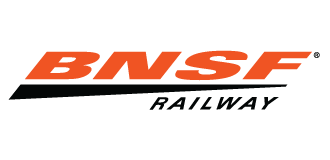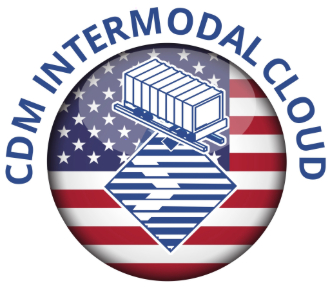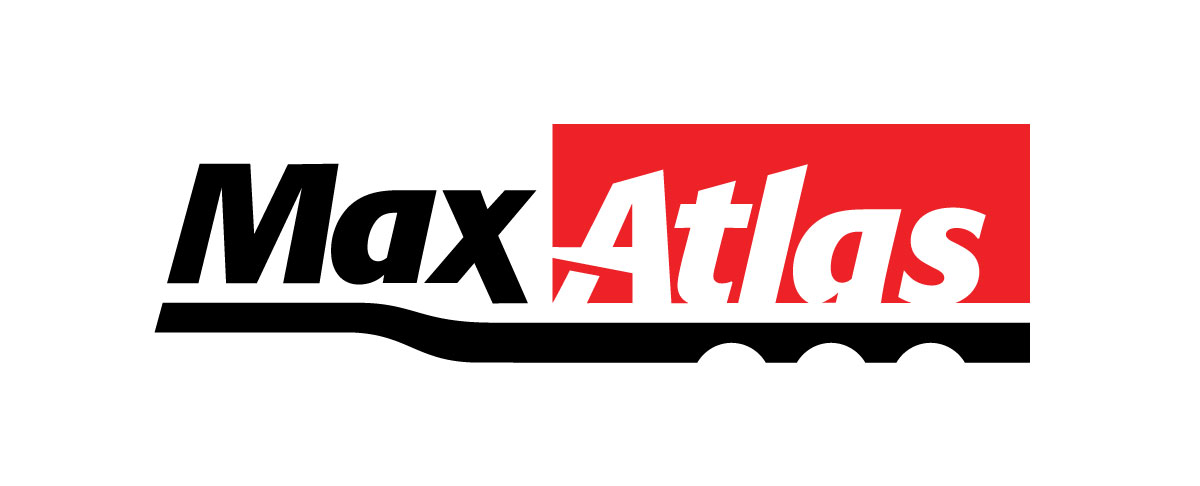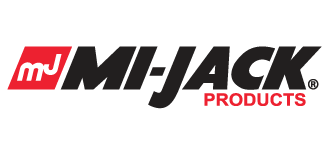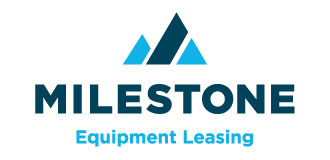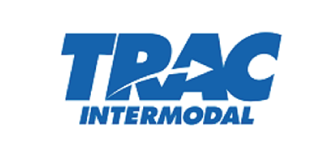in•ter•mo•dal — adj.
The transfer of products involving multiple modes of transportation — truck, railroad or ocean carrier.
Accessorial Charge
The amount due for a wide variety of services and privileges that are made in connection with the transportation of goods, such as loading, unloading, storage, pick-up and delivery.
ACS
See Automated Commercial System
Agent
An individual who negotiates contracts, or acts in the legal capacity of another party.
AGS
See Automated Gate System
Alliance
A vessel sharing agreement, generally on a global scale, between groups of ocean carriers who coordinate and cross-list schedules and sell capacity on each other’s voyages. Also see Vessel Sharing Agreement.
Automated Commercial System — ACS
U.S. Customs and Border Protection system which electronically supports the facilitation of importing and exporting goods. Automation systems are used to process commercial cargo customs transactions including entry of merchandise, collection of duty and tax, control of merchandise, and selection of both import and export cargo for physical inspection.
Automated Gate System — AGS
A high-tech kiosk that uses high resolution cameras and optical character recognition to improve driver processing time at intermodal terminals.
Back Haul
The return movement of a car or container towards the point where the initial load originated.
Bad Order
A freight car loaded improperly, mechanically defective or with a safety violation.
Bad Order Equipment Status Service — BOES
An IANA/UIIA information service that provides a clearinghouse for equipment status information — bad order, gate hold, release — that allows for standardization of data communication formats, simplification of operating system interconnectivity and streamlining of trading partner information for all participants as related to bad order equipment.
Bar Coding
A method of encoding data for fast and accurate readability by electronic readers.
Barge
A flat-bottomed vessel that is pushed or towed by a tugboat. When transporting stacked boxes on inland or coastal waterways, it is referred to as Container-on-Barge — COB. A barge that can accommodate trailers and containers still mounted on chassis is a Roll-on/Roll-off, or Ro/Ro.
Beneficial Cargo Owner — BCO
Person or legal entity that owns or has title to the freight being transported. BCOs may use third parties such as IMCs to negotiate transportation services and rates on their behalf.
Berth
The wharf space at which a ship docks. A wharf may have multiple berths, depending on the length of incoming ships.
BIC
See Bureau International des Containers
Bill of Lading
A shipping form which is both a receipt for freight and a contract for delivery of goods by a carrier. The principal bills of lading are:
- Bill of Lading, Clean — Either a straight or order bill of lading issued by a carrier declaring that the freight has been received in an appropriate condition, without the presence of defects or shortage.
- Bill of Lading, Exchange — A bill of lading issued by a carrier or agent that is substituted for the original bill of lading, where the middleman is shown as the shipper and protects the identity of the original freight supplier.
- Bill of Lading, Export — A bill of lading that is issued to cover a shipment consigned to a foreign country.
- Bill of Lading, Government — A special bill of lading which is used in making shipments for the account of the U.S. government.
- Bill of Lading, Order — A negotiable document that is issued to the order of a shipper or consignee for the delivery of the freight and can be transferred by endorsement to third parties in accordance with its terms.
- Bill of Lading, Straight — A non-negotiable document that is issued to a specified consignee for the delivery of the freight and that cannot be endorsed by another party. Surrender of the original bill is not required upon delivery of the freight unless necessary to identify consignee.
Billing Carrier — Bill Road
The carrier performing the first line haul service of the movement that is responsible for preparing the waybill document and transmitting the information to any following carriers.
Blocking or Bracing
Wood, metal or other approved supports to keep freight in place in or on railcars, containers or trailers.
Board of Commissioners
The governing board of a port authority. Members of a Board of Commissioners can be elected or appointed and usually serve for several years.
Bobtail
Motor carrier slang indicating a non-revenue movement without a trailer or chassis and container attached. See Tractor.
BOES
See Bad Order Equipment Status Service
Bogie
A frame with wheels on which a container is mounted for street or highway transport, also known as a chassis.
Bomb Cart
A heavy-duty trailer used for quick reposition of containers within some intermodal terminals and ports. Unlike a standard chassis, bomb carts do not have twist locks but have side guides to keep boxes on the unit. Bomb carts are often powered by a hostler or yard truck.
Bonded Goods
Dutiable goods upon which excise duty has not been paid, i.e., goods in transit or warehoused pending use. Bonded goods are released for re-export or to the importer upon assessment and payment of import duties, taxes and other charges.
Bonded Warehouse
A secured facility supervised by customs authorities, where dutiable landed imports are stored pending their re-export, or release on assessment and payment of import duties, taxes, and other charges.
Booking
Arrangements made by a shipper or forwarder with the carrier to reserve space on a vessel for the carriage of cargo.
Boxcar
An enclosed railcar, typically forty to fifty feet long, used for packaged freight and some bulk commodities.
Bracing
See Blocking or Bracing
Break-Bulk Cargo
Non-containerized general cargo stored in boxes, bales, pallets or other units to be loaded onto or discharged from ships or other forms of transportation. Examples include iron, steel, machinery, linerboard and wood pulp.
Broker
An agent who arranges interstate movements of goods by other carriers; arranger of exempt loads for owner-operators and/or carriers.
Bulk Cargo
Loose cargo — dry or liquid — that is shoveled, scooped, forked, mechanically conveyed or pumped in volume directly into a ship’s hold, specialty rail cars or truck trailers; e.g., grain, coal and oil.
Bulkhead
A structure used to protect against shifting cargo and/or to separate the load.
Bureau International des Containers — BIC
An international association that oversees technical aspects of the ISO code as it relates to facilitating commercial exchanges and helping define and standardize areas such as technical control, strength, coding, identification and marking of containers.
Cargo
Freight that is loaded into a container or on a trailer.
Carload
Quantity of freight required to fill a railcar or specified quantity necessary to qualify a shipment for a carload rate.
Carrier
An individual or company engaged in the transportation of goods.
Cartage
Transportation of freight for short distances within commercial zones of a city. Also knows as drayage or haulage.
CBP
See Customs and Border Patrol
CDL
See Commercial Driver’s License
CFC Clearance
The limiting dimensions of a rail shipment that would allow/prevent its clearing of tunnels and bridges.
CFS
See Container Freight Station
Chassis
A rectangular trailer with twist-locks that provides the framework on which a shipping container is attached for road transport. Chassis come in a variety of sizes and configurations depending on the weight and length of the container. They are owned by leasing companies, motor carriers, railroads, shippers, and some steamship lines.
Circus Ramp
A ramp at the end of a rail track that allows a truck to back a trailer onto the flatcar. This was common in the early days of intermodal and is no longer a common practice as modern lift equipment is a more efficient way to load trailers and containers on railcars.
Claim
A demand, supported by evidence, to show that the claimant has sustained a loss through the negligence of a carrier acting as agent. The principal kinds are:
- Claim, Damage — A claim due to physical injury to shipment or because shipment was not delivered within a reasonable time.
- Claim, Loss — A claim due to failure to deliver goods.
- Claim, Overcharge — A claim when more than the legally published charges were collected.
- Claim, Reparation — A claim for a shipper refund of charges which, while in accordance with legally published tariffs, are unreasonable or unjust and the rail carrier has since published the lower, reasonable rate.
Class I Railroad
Railroad with operating revenues of $250 million or more annually in 1991 dollars.
COB
See Container-on-Barge
COFC
See Container-on-Flat-Car
Co-Load
Two shipments from different terminals combined to ship as one load.
Commercial Driver’s License — CDL
A driver’s license required in the U.S. to operate heavy-duty commercial vehicles including tractor trailers.
Commercial Invoice
Itemized list issued by a seller/exporter showing quantity, quality, description of goods, price, terms of sale, marks/numbers, weight, date and full name/address of a purchaser/importer.
Commodity
Any article of commerce that is shipped.
Common Carrier
A transportation line engaged in the business of handling freight for compensation and for all persons impartially.
Compliance, Safety, Accountability — CSA
A major safety measurement and reporting initiative of the Federal Motor Carrier Safety Administration — FMCSA.
Conference
An affiliation of ship-owners operating over the same route(s) who agree to charge uniform rates, standardize shipping practices, eliminate freight rate competition, and provide regularly scheduled service between specific ports. A conference is “closed” if one can enter only by consent of existing members of the conference. It is “open” if anyone can enter by meeting certain technical and financial standards. Conference members are common carriers.
Conference Agreement
The agreement between/among ocean carriers through which a shipping conference is created and operated.
Conference Carrier
An ocean carrier who is a member of an association known as a conference.
Connecting Carrier
A carrier that has a direct physical connection with another or a connecting link between two or more carriers.
ConRO
See Roll-On-Roll-Off
Consignee
The individual or organization to which freight is shipped.
Consignor
The individual shipping the goods, more commonly known as the shipper.
Consolidation
Combining multiple shipments under one master bill of lading. Also see Freight Consolidation.
Container
See Intermodal Shipping Container
Container Freight Station — CFS
The location designated by carriers for the receiving of cargo to be loaded into containers by the carrier or devanning of containerized cargo.
Container Handler
This truck loads/unloads trucks and rail cars and stacks loaded containers by attaching its spreader to the four top corner castings or the underside of a trailer. An empty container handler stacks boxes by only attaching its spreader to two of the top corner castings. Also known as a Top-Pick or Top-Lift.
Container-on-Barge — COB
The transport of stacked containers on a barge that is towed to destinations, generally on the Inland waterways. Also see Barge.
Container-on-Flat-Car — COFC
The movement of a container on a railroad flatcar without the container being mounted on a chassis. Also see Flatcar.
Container Yard
A yard used for storage of containers when not in use.
Contraband
Cargo which is prohibited by law.
Contract Carriers
Motor carriers of logistics companies that serve specific shippers with whom the carriers have contracts and are therefore not available for carrying freight for the general public.
Conventional Car
A single platform flat car designed to carry a trailer or container where containers can only be single stacked. Conventional cars are equipped with one or two stanchions, for shipment of one or two trailers.
Conventional Car
A single platform flatcar designed to carry a trailer or container where containers can only be single stacked. Conventional cars are equipped with one or two stanchions, for shipment of one or two trailers.
Converter Dolly
A device which allows a truck tractor to pull two pup trailers.
Corner Casting
The reinforced standardized corners used to lift and secure a box to vehicles and other containers. Most containers have 8 corner castings, with larger boxes having up to 16 to accommodate a variety of transport configurations.
Corps of Engineers
This department of the U.S. Army is vital to keeping navigation channels open by dredging sand, silt and gravel that accumulate on river and harbor bottoms.
Crane
A large machine that straddles a railroad track or vessel for the purpose of loading and unloading containers and trailers to and from railcars or vessels.
CSA
See Compliance, Safety, Accountability
C-TPAT
See Customs-Trade Partnership Against Terrorism
Cube Out
To reach the volume limit of a container.
Customs and Border Patrol — CBP
U.S. federal law enforcement agency charged with regulating and facilitating international trade, collecting import duties, and enforcing U.S. regulations, including trade, customs and immigration.
Customs Broker
An individual who clears goods through customs barriers for importers and exporters. This involves the preparation of documents and/or electronic submissions; the calculation and payment of taxes, duties and excises; and facilitating communication between government authorities and importers and exporters.
Customs-Trade Partnership Against Terrorism — C-TPAT
Supply chain security program led by U.S. Customs and Border Protection to document and determine cargo risk.
DC
See Distribution Center
Dead Head
A long distance drayage movement of empty equipment required to pick up a load.
Deck Barge
A flat-bottomed vessel that is pushed or towed by a tugboat. When transporting stacked boxes on inland or coastal waterways, it is referred to as container-on-barge — COB. A barge that can accommodate trailers and containers still mounted on chassis is a roll-on/roll-off barge.
Dedicated Train
A train that, by design, transports a specific commodity or type of cars. In the case of intermodal, dedicated trains only carry trailers and/or containers.
Delivery Receipt
A document dated and signed at delivery, stating the condition of the freight at delivery.
Demurrage
A penalty for exceeding free time allowed for loading or unloading at a pier or freight terminal. Also a charge for undue detention of transportation equipment or carriers in port while loading or unloading.
Department of Transportation — DOT
A branch of the U.S. federal government responsible for regulating all manner of transportation.
Detention Charges
Penalties assessed against a shipper for the delayed return of a carrier's equipment beyond allowable free time. This is usually equipment picked up by the shipper at the load port for the purpose of filling a container for shipment and held at the shipper's plant or warehouse for an excessive period of time. Detention charges may also be assessed against a consignee who fails to return stripped containers to a carrier within an allowable timeframe.
Distribution Center — DC
A specialized facility where goods are loaded, unloaded, processed and redistributed to retailers, wholesalers or consumers.
Diversion
A change made in the route of a shipment in transit.
Division of Revenue
The amount of revenue apportioned to each carrier participating in a given route, where the customer is invoiced on a through-rate basis.
Dock Receipt
A receipt given for a shipment received or delivered at a pier or dock. When delivery of a foreign shipment is completed, the dock receipt is surrendered to the transportation line and a bill of lading is issued.
Domestic Container
Containers 53- or 48-foot in length that travel by rail or truck in North America.
DOT
See Department of Transportation
Double-Stack
The movement of containers on rail cars that enable one container to be stacked on another container for better ride quality and car utilization; special rail well cars enable containers to be stacked one atop another. Also known as a stack train.
Draft
The depth of a loaded vessel in the water taken from the waterline to the keel — the lowest point of the hull.
Drayage
Transportation of freight between a cargo facility terminal and a customer's facility. Also known as cartage or haulage. There are six types of drayage:
- Drayage, Cross-Town or Inter-Carrier — A movement of an intermodal unit “across town” from one railroad to another for continuance of the move.
- Drayage, Door-to-door — Retail drayage involving over-the-road movement of a unit to a customer location.
- Drayage, Expedited — A movement of an intermodal unit over-the-road to get it there on time. This exceptional drayage usually involves time-sensitive freight.
- Drayage, IMX or Intra-Carrier — A movement of an intermodal unit from a carrier's rail hub to the same carrier's intermodal hub. IMX drayage extends the reach of an intermodal hub.
- Drayage, Pier — An over-the-road movement of an intermodal unit from a carrier's rail hub to a port's dock or pier.
- Drayage, Shuttle — A movement of an intermodal unit either loaded or empty from a hub to another parking lot because the railroad has run out of room at the hub.
Drayman
A person employed to pick up or drop off a container or trailer at an intermodal terminal.
Driver Assist
The loading/unloading of a container or trailer when a drayman is required to assist.
Driver Vehicle Examination Report Notification Service — DVER
An IANA/UIIA information service that provides an efficient method for intermodal equipment providers and motor carriers to be notified and receive a copy of the intermodal equipment provider report and page 2 of the Driver Vehicle Examination Report resulting from roadside inspections.
Driver Vehicle Inspection Reporting — DVIR
An IANA/UIIA information service linking the Global Intermodal Equipment Registry, Intermodal Driver Database and Uniform Intermodal Interchange and Facilities Access Agreement database to provide efficient access to data needed for DVIR reporting required under the Federal Motor Carrier Safety Regulations.
Drop & Pull
The dropping of a loaded or empty intermodal unit by a drayman at a shipper or receiver, hooking it up to another unit which was previously dropped and returning it to the ramp.
Dry Run
When a drayman goes to a ramp to pick up a container and for some reason leaves without one.
Dry Van
An enclosed non-climate-controlled rectangular trailer designed to carry general cargo. Also known as a trailer.
Dunnage
The material used to protect or support freight in containers or trailers.
DVER
See Driver Vehicle Examination Report Notification Service
DVIR
See Driver Vehicle Inspection Reporting
EDI
See Electronic Data Interchange
EIR
See Equipment Interchange Report
Electronic Data Interchange — EDI
The process of sending and retrieving information electronically, i.e., bills of lading, freight bills, etc.
Embargo
An order issued by a carrier or regulatory body to restrict the handling of freight.
Equipment Interchange Report — EIR
A document executed by a motor carrier and a terminal transferring possession of a container or chassis from one to the other, and showing equipment condition at time of transfer.
Equipment Provider
The holder of the beneficial title to the equipment, whether it be a container, chassis or trailer. They can be ocean carriers, rail carriers and/or leasing companies. Some shippers and motor carriers also own their own containers and/or chassis, and would be considered equipment providers.
Equipment Status Clearinghouse
Applications developed by IANA/UIIA to provide information related to the condition of intermodal equipment at specific points in the logistics cycle. The three applications are: Driver Vehicle Inspection Reporting — DVIR, Driver Vehicle Examination Report Notification Service — DVER, and Bad Order Equipment Status — BOES.
Export
To send goods and services to another country.
FAK
See Freight of All Kinds
Federal Highway Administration — FHWA
The division of the U.S. Department of Transportation dedicated to the construction, maintenance and preservation of U.S. highways, bridges and tunnels.
Federal Maritime Commission — FMC
The independent federal agency responsible for regulating the U.S. international ocean transportation system for the benefit of U.S. exporters, importers and U.S. consumers.
Federal Motor Carrier Safety Administration — FMCSA
The division in the U.S. Department of Transportation that regulates the trucking industry in the U.S.
Federal Railroad Administration — FRA
A division of the U.S. Department of Transportation that regulates rail transportation.
FEU
See Forty-Foot Equivalent Unit
FHWA
See Federal Highway Administration
Fifth Wheel
The coupling that provides the connection between a semi-trailer and semi-truck.
Flat Rack
A piece of intermodal equipment used to transport items too large to fit inside a box.
Flatbed
A trailer with a main deck that is free of walls or ceiling constraints accommodating a wide variety of unusually sized freight.
Flatcar
A standard piece of rail equipment that can transport a variety of freight configurations including heavy containers, trailers, or a combination of both. A flatcar is capable of only carrying one row of containers at a time. In order to carry a trailer, the flatcar must have a fifth wheel to secure the vehicle. Modern lightweight flatcars designed to transport both containers or trailers are known as spine cars. The terms container-on-flatcar — COFC, and trailer-on-flatcar — TOFC, are commonly used to describe the type of intermodal train.
Flip
The transfer of a container from the ground to a chassis for street or highway transport.
Flip Charges
Cost assessed to a shipper when the railroad is required to provide an unnecessary or extra flip. An example of this is when a private container is grounded off of a train and no chassis is available at that time. A flip charge is assessed because a flip is required at a time after the train is unloaded.
FMC
See Federal Maritime Commission
FMCSA
See Federal Motor Carrier Safety Administration
For-Hire Carrier
A company that provides truck transportation of freight belonging to others and is paid for doing so. There are two types of for-hire carriers, Truckload — TL, and Less Than Truckload — LTL.
Forklift
This basic piece of equipment is limited to handling only loaded 20-foot containers or empty containers of other dimensions. Forklifts with special attachments may be used to stack chassis in a yard or hook up gensets.
Forty-Foot Equivalent Unit — FEU
A term used in indicating container vessel or terminal capacity. Two twenty-foot containers equal one FEU.
Forwarder
An agent who organizes the transport of freight from origin to destination on behalf of the shipper.
FRA
See Federal Railroad Administration
Free Time
The period allowed by the owner to accept delivery of freight before storage or detention charges begin to accrue.
Free Trade Zone
- Broadly referring to the reduction or elimination of customs duties on goods produced within and shipped between the participating countries in a reciprocal trade agreement. NAFTA is an example of such an agreement, creating a North American free trade zone, as is the European Union.
- A defined geographic area — typically a city or port area, similar to a free port — which has “extra-territorial” status with respect to the collection of customs duty, import and export taxes and other cargo admissibility restrictions. Free trade zones are created to improve the export competitiveness of manufacturing, warehousing and processing, and assembly businesses. By eliminating duty on imported raw materials components and scrap which are used or consumed in the trade zone, costs of finished products are reduced.
Freight
Cargo that is being transported.
Freight Bill
A shipping document that gives a description of the freight, its weight, amount of charges, taxes and whether the bill is collect or prepaid. If the bill is prepaid, freight charges are paid by the shipper. If the bill is collect, freight charges are paid by the receiver of the goods or a third party.
Freight Consolidation
The process of combined multiple separate consignments into a single lot or container load constituting a more economical shipping unit for shipment over all or some of the transportation segments. Upon completion of the “consolidated” shipment segment, the process must be reversed — the individual consignments must be separated out for delivery or on-shipment to the respective individual consignees.
Freight Consolidator
A party serving as an indirect carrier, though the term may also refer to a party other than a carrier who is physically contracted to perform freight consolidation services, for example a container freight station.
Freight Forwarder
An individual or company who assembles small shipments into one large shipment which is then tendered to a regulated for-hire carrier. Upon reaching destination, the shipment is separated into small shipments and delivered.
Freight of All Kinds (FAK)
A shipping classification usually referring to three or more different commodities shipped as a single freight class.
Fully Cellular Container Vessel
A ship specifically designed to efficiently store freight containers throughout the entire structure. The vessel's design includes cellular guides within its cargo holds to line up the four corners of containers on top of each other.
Gate
A point at an intermodal terminal where a clerk checks in and out all containers and trailers. All reservations and paperwork are checked at the gatehouse.
Geared Container Vessel
A ship equipped with its own cranes for handling containers. These vessels are generally smaller than gearless or fully cellular container vessels. They are more flexible in the ports they visit as they do not require pier-side cranes to load and discharge containers.
General Freight Carrier
A shipper which handles a wide variety of commodities in standard trailers. Such carriers can provide less-than-truckload service.
Genset
A portable diesel generator used to power a reefer when the container is traveling by road, rail, or at a terminal without an electric reefer hook-up. Some designs mount to the front of the container while others attach below the chassis. They are not required on a vessel as the box will be plugged into the ship’s electrical system.
Global Intermodal Equipment Registry — GIER
An IANA/UIIA virtual technology solution to meet the Federal Motor Carrier Safety Administration regulations requiring the identification of intermodal equipment and the intermodal equipment provider responsible for maintenance and repair of that equipment.
Gross Weight
The entire weight of a shipment, including packaging and any additional materials associated with the shipment.
Grounded
An intermodal facility where containers are stored by stacking them on top of one another.
Haulage
Transportation of freight between a cargo facility or terminal and a customer's facility. Also known as drayage or cartage.
Hazardous Material
Commonly referred to as HazMat, any item or chemical which when being transported or moved is a risk to public safety or an environmental hazard. Hazardous material includes: explosives, radioactive materials, etiologic agents, flammable or combustible liquids or solids, poisons, oxidizing or corrosive materials and compressed gases.
Headhaul
The highest revenue generating shipping lane from shipper to receiver.
Heavy Haul
The transport of over-dimensional, often over-weight material. Generally, this freight requires a state permit and specialized trailer in order to meet DOT regulations. These shipments may also require special routings, as only certain highways allow extremely heavy vehicle weights.
Heavy Lift Charge
A fee assessed in addition to ocean freight charges when cargo is too heavy to be handled by normal means, necessitating the use of special cranes.
High Cube Container
A container similar in length and width to a standard container, but a foot taller in height. Standard containers have a maximum height of 8’6”, or 2,591 mm, while high-cube containers are or 9’6”, or 2,896 mm, tall. ISO high cube containers share the same width and length as regular containers. Domestic 53’ high cube containers are the same length as standard containers, but are 6” wider than standard domestic containers.
Hostler
A smaller truck tractor used to reposition containers, semi-trailers and chassis within an intermodal terminal, cargo yard, port or warehouse facility. Also known as a yard truck, terminal tractor, utility tractor, rig or shunt truck.
Hours-of-Service
Regulations issued by the FMCSA governing the working hours of truck drivers in the U.S.
IANA
See Intermodal Association of North America
ICTF
See Intermodal Container Transfer Facility
IDD
See Intermodal Drivers Database
IEP
See Intermodal Equipment Provider
IICL
See Institute of International Container Lessors
IIEC
See Intermodal Interchange Executive Committee
ILA
See International Longshoremen’s Association, AFL-CIO
ILWU
See International Longshore & Warehouse Union
IMC
See Intermodal Market Company
IME
See Intermodal Equipment
Importer
The party who purchases goods for import into a country and/or who stands responsible for the processing and correctness of the customs entry and payment of customs duty, if any. An importer is typically, though not always, the consignee and/or party with beneficial interest in the cargo.
IMTS
See Intermodal Market Trends & Statistics
In-bond
The status of merchandise admitted provisionally into a country without payment of duties, either for storage in a bonded warehouse or for transshipment to another point where duties will eventually be imposed and paid.
Incoterms
A list of standard terms for foreign trade contracts. The terms are created by the International Chamber of Commerce — ICC. Also known as International Commerce Terms.
Ingate
Location within an intermodal ramp where entering trucks are inspected, or the process of checking a container or trailer into the intermodal facility. This process includes inspection of the unit, reservation confirmation and the input of data into a computer system. When delivering the vehicle to the facility, the drayman must state the applicable shipper and destination.
Inland Carrier
A transportation company which hauls export or import freight between ports and inland points.
Inland Port
An intermodal container transfer facility that is situated in the interior of a country with rail, barge or truck services to a larger coastal port.
Institute of International Container Lessors — IICL
A trade association whose member companies are engaged in leasing marine cargo containers and chassis to ship operators and others.
Interchange
The transfer of physical possession of intermodal equipment from one segment of the logistics supply chain to another.
Interchange Agreement
A legally binding arrangement between an equipment provider and a drayage company that outlines the responsibilities of the parties involved in the equipment interchange.
Interior Point Intermodal — IPI
The import traffic movement from an origin port to an inland point on an ocean bill of lading.
Interline Freight
Goods moving from point of origin to destination over two or more transportation lines.
Intermodal
The movement of freight, in a container or on a trailer, by more than one mode of transportation. The movement can be made from rail to truck to ship in any order.
Intermodal Association of North America — IANA
The industry trade association representing the combined interests of the intermodal freight industry. IANA promotes the growth of efficient intermodal freight transportation through innovation, education and dialogue. IANA’s membership roster of over 1,000 corporate members includes railroads — Class I, short-line and regional; water carriers and stack train operators; port authorities; intermodal truckers and over-the-road highway carriers; intermodal marketing and logistics companies; and suppliers to the industry such as equipment manufacturers, intermodal leasing companies and consulting firms. IANA’s associate, non-voting, members include shippers — defined as the beneficial owners of the freight to be shipped — academic institutions, government entities and non-profit associations.
Intermodal Container Transfer Facility — ICTF
A near-dock rail container terminal serving a marine terminal.
Intermodal Drivers Database — IDD
In conjunction with the UIIA and in response to the call for increased security at intermodal facilities, IANA developed a secure, web-based system for motor carriers to provide and maintain driver identification information that is required to access specific intermodal facilities.
Intermodal Equipment — IME
The trailing apparatus used in the intermodal transportation of containers over public highways in interstate commerce. While primarily container chassis, IME can also include trailers for piggyback transit.
Intermodal Equipment Provider — IEP
Any individual or company that interchanges intermodal equipment — IME — with a motor carrier pursuant to a written interchange agreement or has a contractual responsibility for the maintenance of the IME.
Intermodal EXPO
IANA’s annual event is where the industry’s products and services are showcased and the industry’s issues and challenges are examined. Each fall, Intermodal EXPO’s networking, dialogue and education make it the essential event for the intermodal supply chain.
Intermodal Interchange Executive Committee — IIEC
A standing committee of the Intermodal Association of North America responsible for the administration of the Uniform Intermodal Interchange and Facilities Access Agreement, and for the processing of changes and/or modifications to the agreement. The committee consists of a minimum of two representatives from each mode representing motor, ocean and rail carriers participating in the agreement, with equal representation of each mode. Each representative also names an alternate from their respective mode who participates in committee meetings and serves as the voting member in the absence of the principal representative.
Intermodal Market Trends & Statistics — IMTS
IANA's quarterly published analysis of industry activities that provides a comprehensive look at intermodal business volumes. The report includes an in depth look at movements by equipment and key traffic corridors across North America.
Intermodal Market Company — IMC
An organization that purchases rail and truck transportation services, utilizes equipment from multiple sources, and provides other value-added services under a single freight bill to the ultimate shipper.
Intermodal Shipping Container
A large reusable rectangular box, generally constructed of steel or aluminum, designed to withstand the rigors of repeated travel from ship to truck to rail and back. Containers are designed to be interoperable with all modes of intermodal transport. Most standard dry containers are 20, 40, 45, 48 or 53 feet in length. Also known as a box.
Intermodal Terminal
A facility designed for the loading and unloading of containers and trailers to and from flatcars for movement on the railroad and subsequent movement on the street, sea or highway.
Intermodal Tractor Registry — ITR
A registration point for UIIA licensed motor carriers to provide tractor/truck information on behalf of their company drivers or owner operators.
International Commerce Terms
See Incoterms
International Longshore & Warehouse Union — ILWU
The North American labor union representing approximately 42,000 members in over 60 local unions in the states of California, Washington, Oregon, Alaska and Hawaii. An additional 3,500 members belong to the Inlandboatmen’s Union of the Pacific, which constitutes the Union’s Marine Division. Another 14,000 members belong to the autonomous ILWU Canadian area.
International Longshoremen’s Association, AFL-CIO — ILA
The largest union of maritime workers in North America, representing upwards of 65,000 longshoremen on the Atlantic and Gulf Coasts, Great Lakes, major U.S. rivers, Puerto Rico and Eastern Canada.
International Standard Organization — ISO
The international standards body that unifies container dimensions, carrying capacity and securement point design into a globally accepted standard. ISO boxes, often referred to as marine containers, come in 20-, 40-, or 45-foot lengths.
IPI
See Interior Point Intermodal
ISO
See International Standard Organization
ITR
See Intermodal Tractor Registry
J-1
A report filled out during the ingate/outgate process at a rail ramp that details damage to the unit, container information, shipping information, drayman involved and time of ingate/outgate.
Just-In-time — JIT
A type of cargo transport and/or delivery method in which the goods arrive as close to the time they are needed as possible.
Kingpin
The large pin that connects a chassis or trailer to a fifth wheel, locking the two units together and allowing for side-to-side pivoting.
Lading
The freight in the container or trailer.
Land Bridge
Intermodal system of getting international cargo across an intervening continent or large landmass from one coast to another via rail in lieu of all water routes.
Landing Gear
The legs of a chassis that support the vehicle when not attached to a semi-truck.
Landlord Port
A port where the port authority builds the wharves, which it then rents or leases to a terminal operator — usually a stevedoring company. The operator invests in cargo-handling equipment — forklifts, cranes, etc. — hires longshore laborers to operate such lift machinery and negotiates contracts with ocean carriers to handle the unloading and loading of ship cargoes.
Lane
A route with specified origination and destination regions regularly used for the transportation of cargo.
Lashing Rod
A piece of equipment used to provide additional stability when securing containers onboard a ship. Also known as a turnbuckle.
Less-Than-Container Load — LCL
An individual shipment that does not completely fill an entire container. When many shippers’ goods occupy a single container, each shipper’s shipment is considered to be LCL.
Less-Than-Truckload — LTL
A shipment that does not fill an entire truckload. Specialized carriers provide service exclusively for this type of shipment. These services are priced by weight, density, value and ease of handling in combination with distance. The National Motor Freight Classification standards are commonly used in order to identify the best pricing for a particular commodity on a particular shipping lane.
Lift
The process of moving a container or trailer to/from a railcar, vessel or chassis.
Line Haul
Movement of freight from a station of origin to a destination station.
Load Shift
The movement of the contents of a container or trailer sometime after it leaves the actual origin and before it arrives at the final destination.
Local Move
A railroad movement originating and terminating on a single railroad’s line without any interchange.
Locomotive
The transport vehicle that provides power to a freight train. It is common for several locomotives to be attached to a very long intermodal train. Also known as an engine.
Logistics
The management of the flow of resources, not only goods, between the point of origin and the point of destination in order to meet the requirements on a bill of lading. Logistics involves the integration of information, lading via land transportation, inventory, warehousing, material handling, packaging and often security.
Longshoremen
A person employed in a port to load and unload ships.
LTL
See Less-Than-Truckload
Maintenance of Way
The upkeep and repair of the railroad roadbed — rail, ties, ballast, bridges, etc.
Manifest
A list of goods on a vessel.
MARAD
See Maritime Administration
Marine Terminal
A facility within a port or port area where freight is handled, specifically the loading and unloading of ships, and facilities for the storage of cargo.
Marine Terminal Operator — MTO
An organization that provides wharfage, dock, warehouse or other marine terminal facilities to ocean common carriers moving cargo in ocean-borne foreign commerce of the United States.
Maritime
Business pertaining to commerce or navigation transacted upon the sea or in seaports.
Maritime Administration — MARAD
The agency of the U.S. Department of Transportation responsible for commercial maritime matters, the U.S. maritime industry and strategic sea-lift.
MCD
See Motor Carrier Database
Mode of Transport
The different ways of moving freight: road, rail, maritime and inland waterway.
Motor Carrier
A freight carrier using a motorized highway/road conveyance, commonly referred to as a trucker.
Motor Carrier Database — MCD
A database maintained by Intermodal Association of North America which is comprised of motor carriers participating in the Uniform Intermodal Interchange and Facilities Access Agreement, or UIIA, a program of IANA. The database is updated on a daily basis and is the most comprehensive and accurate database of North American intermodal motor carriers available.
MTO
See Marine Terminal Operator
Multimodal Transport
The movement of freight under a single contract, but performed by more than one mode of transport. Intermodal transport is a particular type of multimodal transport.
Non-Vessel Operating Common Carrier — NVOCC
A carrier defined by maritime law offering an international cargo transport service through the use of underlying carriers and under one's own rate structure in accordance with tariffs.
Notify Party
The company or individual that is summoned at the time a container or trailer is grounded from a train or a ship. Most notified parties are draymen.
Ocean Bill of Lading
A receipt and contract of carriage with a steamship company for movement of freight across international waters between ports.
Ocean Carrier
A shipping company that operates container cargo vessels. Many are international corporations that facilitate intermodal transportation around the world. These companies own, operate and lease equipment, as well as operate marine terminals through subsidiary entities, and they partner with shore-side providers to ensure seamless intermodal service to inland destinations. Also known as a steamship line.
Ocean Carrier Equipment Management Association — OCEMA
The U.S.-based group of major ocean common carriers that focuses on operational and safety matters pertaining to the intermodal transportation of ocean freight within the U.S.
Ocean Freight Forwarder — OFF
An organization that dispatches shipments from the U.S. by common carriers; books or otherwise arranges space for those shipments on behalf of shippers; and processes the documentation or performs related activities related to those shipments.
Ocean Transportation Intermediary — OTI
An entity licensed by the Federal Maritime Commission — FMC — to be an ocean freight forwarder — OFF — and/or a non-vessel operating common carrier — NVOCC).
OCEMA
See Ocean Carrier Equipment Management Association
OFF
See Ocean Freight Forwarder
On-Dock Rail
A marine terminal that offers direct rail access for transferring containers between vessels and rail cars without requiring boxes to leave the facility.
Open Top Container
An intermodal box without a steel roof to facilitate the loading of heavy or oversize cargo. Many open tops feature a tarp to protect the freight from the elements.
Operating Port
A port model whereby the port authority builds the wharves, owns the cranes and cargo-handling equipment, and hires the labor to move cargo in the sheds and yards. A stevedore hires longshore labor to lift cargo between the ship and the dock, where the port’s laborers pick it up and bring it to the storage site.
OTI
See Ocean Transportation Intermediary
OTR
See Over the Road
Out-Of-Service
Commercial driver or equipment condition(s) that reflect violation(s) of the Federal Motor Carrier Safety Regulations — FMCSR — that pose an imminent hazard to public safety.
Outgate
The process of checking a container or trailer out of an intermodal facility.
Over the Road — OTR
The movement of freight for long distances by truck.
Owner-Operator
A professional truck driver who owns and operates his/her own trucking business. The driver may lease on to a carrier or they may operate under their own authority. If they operate under their own authority, they will have a Department of Transportation — DOT and Motor Carrier — MC number identifying them as a registered carrier. There are approximately 350,000 owner-operators registered in the United States; most lease on to larger carriers’ and operate under that carriers DOT number.
Packing List
A detailed specification as to goods packed into a container or trailer.
Pad
An area within a parking lot or intermodal terminal designated for a particular type of container or trailer, such as loaded outbound.
Pallet
A wooden, paper or plastic platform, usually with a top and bottom, on which packaged goods are placed to facilitate movement by some type of freight handling equipment.
PED
See Professional Employee Driver
Per Diem
A charge based on a fixed rate per day, which a carrier makes against another carrier or customer for use of its containers or trailers.
Pier
The dock in a seaport at which cargo is loaded or unloaded from ships or vessels.
Piggyback
Transportation of a trailer on a railroad flatcar.
Pigs
A railroad term for trailers loaded on flatcars.
Placard
A sign affixed to a rail car or truck, which identifies the product being transported in that vehicle, i.e. hazardous material, flammable liquid, etc.
Pool
An assigned group of containers, trailers or cars used to satisfy the transportation requirements of a customer.
Port
A city, town or other place where ships load or unload.
Port Authority
A state or local government that owns, operates or otherwise provides wharf, dock and other terminal investments at ports.
Port of Call
A port where a ship discharges or receives cargo.
Port of Entry
A port, officially designated by the government, at which foreign goods are admitted into the receiving country.
Portainer Crane
See Ship-to-Shore Crane
Private Carrier
A company which maintains its own trucks or equipment to transport its own freight.
Private Equipment
Apparatus owned by a person or company that is not engaged in common carriage service.
Professional Employee Driver — PED
A truck driver who does not own or operate their own truck and trailer, nor do they have a DOT or MC number. Instead, PEDs work directly for a carrier as an employee.
Proportional Price
The price from or to an intermediate point. This rate is to be used in combination with another carrier's proportional rate to make an interline rate.
Pup
A 28- or 28.5-foot trailer used mostly for less-than-truckload shipments. Two pup units may be joined and towed by a single truck.
Rail Carrier
A provider that operates rail service. Rail carriers are present at port facilities through on-dock and near-dock service, providing shippers with more efficient routes for imports and exports. The larger national and regional railroads own and operate intermodal terminals, where partner providers transfer cargo between modes. In addition to transporting the intermodal equipment and boxes of other providers, some rail carriers own and/or lease their own equipment in order to provide customers with door-to-door intermodal services.
Rail-Mounted Gantry Crane — RMG
A crane truck, fixed to rails, that straddles rows of containers, trailers, truck lanes or rail tracks. A wide-span RMG is capable of serving multiple rail tracks, truck lanes and container stacking rows at the same time.
Rail Ramp
The intermodal rail terminal where trailers and/or containers are loaded/unloaded on railcars.
Railyard
A complex with a series of railroad tracks for storing, sorting or loading/unloading railroad cars and/or locomotives. Many tracks are laid parallel to each other for keeping rolling stock stored off the mainline, so that it does not obstruct the flow of traffic. In the railyard, railcars are often moved around by specially designed yard locomotives. Though an intermodal rail terminal may have a railyard for lining up cars, the railyard is often a separate operation from the loading/unloading of containers and trailers.
Ramp
An intermodal terminal.
Ramp-to-Door
A movement of lading from the intermodal ramp closest to the customer to the receiver’s dock.
Ramp-to-Ramp
A movement of lading from the intermodal ramp closest to the customer to the closest intermodal ramp to the receiver.
Reach Stacker
A truck with a long boom that allows it to load/unload trucks and rail cars as well as access containers in an adjacent row. Also known as a Side-Loader.
Reconsignment
Any change, other than a change in route, made in a consignment before the arrival of goods at their billed destination. Or, any change made in a consignment after the arrival of goods at their billed destination.
Reefer
A slang term for a refrigerated container used for the transport of temperature or climate sensitive cargo like meat, fruit, vegetables, dairy products, chemicals or pharmaceuticals. Reefer can also refer to a refrigerated trailer.
Refrigerated Carrier
A trucking company that specializes in moving temperature sensitive freight. Refrigerated carriers utilize trailers with controlled temperature units to keep specialized products at a constant temperature.
Revenue Empty
Movement of an empty container or trailer, done for repositioning purposes, that generates revenue for the railroad.
RMG
See Rail-Mounted Gantry Crane
Roadability
The condition of intermodal equipment where it is in a good state of repair and ready for service. Generally referring to chassis, it can also refer to the safety check conducted on equipment prior to leaving an intermodal facility.
RoadRailer
A special highway semi-trailer with two sets of retractable wheels — one steel, the other rubber — that can be pulled by a locomotive on the rails without the need for a railcar.
Roll-On-Roll-Off — RORO
A type of vessel designed to permit cargo to be driven on at origin and off at destination; used extensively for the movement of automobiles. Some vessels are hybrids between RoRo and a container ship with below-deck vehicle storage and containerized freight above deck; this type of vessel configuration is called ConRo.
Rubber-Tired Gantry Crane — RTG
A crane truck wide enough to straddle multiple rows of containers, trailers, truck lanes or rail tracks.
Rubber-Wheel Interchange
Containers or trailers interchanged between two railroads by means of drayage.
SCAC®
See Standard Carrier Alpha Code™
Security Seal
A mechanism used to seal intermodal containers and truck trailers to provide security and tamper evidence. These seals come in a variety of designs; however, all have a uniquely generated number which is checked for signs of tampering during each step in the supply chain.
Semi-trailer
The 48- or 53-foot unit towed behind a truck tractor that carries freight.
Ship-to-Shore Crane — STS
A large crane found at a marine terminal and used to load/unload ships by transferring containers between the dock and the vessel. Also known as a Portainer Crane.
Shipper
The person or company who is usually the supplier or owner of commodities shipped.
Shippers' Agent
A person or firm acting on behalf of multiple shippers for the purpose of contracting and arranging transportation on a lower cost and/or otherwise more advantageous basis by combining their available cargo volume.
Shippers’ Associations
Entities that represent groups of shippers to negotiate and manage transportation services that pool the cargo volumes of members to leverage the most favorable service contract rate levels.
Shipping Channel
The section of a waterway that is maintained to a proper depth for the passage of commercial marine vessels.
Shipping Documents
Papers accompanying a shipment as it moves from its origin to its destination.
Short Line
A small regional or local railroad that operates line-haul, switching or terminal services.
Short Sea Shipping
The transport of goods by coastal or inland waterways. In some parts of the U.S., containers are unloaded at a major port and then transferred by tugboat and barge to other ocean or river ports as a way to bypass highway congestion.
Short shipped
Cargo which was originally scheduled for a particular vessel/voyage, but is left behind by the operator of the vessel.
SIC
See Standard Industrial Code
Side-Loader
See Reach Stacker
Sleeper
The cabin of a larger semi-truck equipped with living quarters so a driver may sleep in the vehicle during long-haul trips or when mandated by Hours of Service regulations.
Slot Utilization
The method of occupying every space available on a double stack car.
Split Shipment
Multiple container load shipment booked for one vessel, but split and moved on multiple vessels.
Spreader
The device used by a variety of container handling equipment to lift boxes by locking into the casting corners. Spreaders used to move semi-trailers have arms that grip reinforced lifting points on the underside of the trailer.
Stack Car
See Well Car
Stack Train
A train with double stacked containers in well cars.
Stanchion
The hitch used to support the nose end of a trailer when mounted on a flatcar. There are two types of stanchions: collapsible and fixed.
Standard Carrier Alpha Code™ — SCAC®
A unique code issued by the National Motor Freight Traffic Association used to identify transportation companies and their associated shipping documents. Participants in the UIIA are required to maintain a SCAC as it is used to identify freight containers, trailers and chassis.
Standard Industrial Code — SIC
A standard commodity/product classification system used in the United States.
Standard Transportation Commodity Codes — STCC
A seven-digit coding structure designed to classify all commodities or articles which move or may move in freight transportation.
STB
See Surface Transportation Board
STCC
See Standard Transportation Commodity Codes
Steamship Agent
A local representative who acts as a liaison among ship owners, local port authorities, terminals and supply/service companies. The agent handles all details for getting the ship into port, having it unloaded and loaded, inspected and out to sea quickly. The agent also arranges for pilots, tug services, stevedores, inspections, etc. as well as seeing that a ship is supplied with food, water, mail, medical services, etc. A steamship agent does not own the ship.
Steamship Line
See Ocean Carrier
Steel Wheel Interchange
Containers or trailers that are interchanged between two railroads while on the railroad flatcar.
Stevedore
An individual or firm employing longshoremen for the purpose of loading and unloading a vessel.
Storage Charge
A charge assigned to shipper or consignee for holding containers or trailers at an intermodal terminal beyond the free time allotted to them.
Straddle Carrier
A motorized crane that runs on rubber tires designed to load and unload railcars and chassis or stack boxes within the terminal by straddling the containers.
Straight Truck
A vehicle which carries cargo in a body mounted to its chassis rather than on a trailer towed by a vehicle.
Street Interchange
A transfer of financial responsibility for a container from one IMC to another. The transfer happens on a date and time that is specified by the drayage firm in control of said container, or by an IMC that has financial responsibility for that particular container. Generally, these transactions take place outside of an intermodal facility. Also known as Street Turn.
Street Time
The time a container or trailer is away from the possession of the equipment owner.
Street Turn
See Street Interchange
Stripping
The process of removing cargo from a container.
STS
See Ship-To-Shore Crane
Stuffing
The process of loading cargo into a container.
Supply Chain
A system of organizations, people, technology, activities, information and resources involved in moving a product or service from supplier to customer. Supply chain activities transform natural resources, raw materials and components into a finished product that is delivered to the end customer.
Surface Transportation Board — STB
A bipartisan adjudicatory and regulatory body that the U.S. Congress charged with resolving railroad rate and service disputes and reviewing proposed railroad mergers.
Tank Container
An intermodal container specifically designed to transport liquids, gases or powders.
Tare Weight
The weight of a container and the material used for packing. As applied to a car/trailer, the weight of the car/trailer exclusive of its contents.
Tariff
A legal list of rates, additional charges, regulations and requirements of a carrier, port or conference. Ocean tariffs are regulated by the Federal Maritime Commission. Inland tariffs, as well as ocean tariffs to/from Puerto Rico/U.S. Virgin Islands, are regulated by the Surface Transportation Board.
Terminal Feed Service — TFS
A service provided by IANA that enables motor carrier interchange status information to be disseminated electronically on behalf of participating UIIA equipment provider subscribers to over 90 terminals, container yards and depots across the U.S. and Canada. This service assists in expediting the interchange process by ensuring that intermodal facilities receive motor carrier interchange status data in a timely and efficient manner.
Terminal Railroad
A short line railroad whose primary function is to perform switching services to a terminal facility. Terminal railroads may be jointly owned by several major carriers.
TEU
See Twenty-Foot Equivalent Unit
TFS
See Terminal Feed Service
Third-Party Logistics Provider — 3PL
A firm that provides outsourced logistics services to its customers for part or all of their supply chain management functions. These firms typically specialize in integrated operations, warehousing and transportation services that can be scaled and customized to customers’ needs based on market conditions and the demands and delivery service requirements for their products and materials.
Through Rate
A rate applicable from origin to destination over two or more rail carriers.
TOFC
See Trailer-on-Flatcar
Top-Lift
See Container Handler
Top-Pick
See Container Handler
Tractor
A heavy-duty motor vehicle with a powerful engine and a driver's cab, designed for hauling a trailer.
Tractor-Trailer
A tractor and semi-trailer combination.
Trailer
A rectangular box with permanent wheels attached for the transport of goods on rail, highway or a combination of both. Also known as a Dry Van or Semi-Trailer.
Trailer-on-Flatcar — TOFC
A rail trailer, or container mounted on a chassis, that is transported on a railcar. Also known as Piggyback.
Transit Time
The period for freight to move between two points — i.e., from shipper to consignee.
Transloading
The process of transferring goods from one transport mode to another by the consolidation of multiple ocean containers into larger domestic containers.
Transportation Broker
A non-asset based company which sells and manages freight transportation services on behalf of their clients. Their service includes finding a qualified carrier — with the proper insurance and operating authorities — who can move the freight in a timely manner, negotiating a good rate and then managing the entire process from pickup to delivery.
Transportation Worker Identification Credential — TWIC
A Transportation Security Administration and U.S. Coast Guard program that uses a biometric card to control access to marine terminals for improved security.
Transshipment
The unloading of cargo at a port or point where it is then reloaded, sometimes into another mode of transportation, for transfer to a final destination.
Truckload
A quantity of goods that can be transported in a truck. Full truckloads — FTL or sometimes TL — generally utilize van trailers.
Truckload Carrier
A trucking company which dedicates a trailer to a single shipper's cargo.
Twenty-Foot Equivalent Unit — TEU
The common unit used in indicating the capacity of a container vessel or terminal. A 40-foot container is equal to two TEUs.
TWIC
See Transportation Worker Identification Credential
Twins/Twin Trailers
Combination of a tractor and two semi-trailers connected in tandem.
Twist-Lock
The device inserted into a container’s standardized corner casting that locks the box to chassis, ships, rail cars, handling equipment and other boxes.
Uniform Intermodal Interchange and Facilities Access Agreement — UIIA
A standard equipment interchange contract used in the intermodal industry that has been developed by water, rail and motor carriers and administered by the Intermodal Association of North America.
United States Coast Guard — USCG
The uniformed service responsible for maritime law enforcement, safety and security.
Vessel
A ship.
Vessel Sharing Agreement — VSA
An arrangement between steamship lines to operate shared services along specified routes using a specific number of ships. Partners cooperate by sharing space and container slots on the ships. These alliances help steamship lines save on operating costs by reducing the number of vessels an individual carrier ordinarily would need to deploy to offer the same frequency and competitive cost of services. Also see Alliance.
Waiting Time Fee — WTI
A charge that is assessed by a trucker or other modal carrier when their equipment and/or driver are required by a shipper, consignee or circumstances beyond their reasonable control to wait at a pick up or delivery. Also known as Dwell Time Fee or Inland Haulage Waiting Time Fee.
Warehousing
The storing of freight.
Waybill
A shipping document including the: origin and destination, consignor and consignee, routing, description, weight of the commodity, any instructions for special services, rate and total charges.
Well Car
An intermodal rail car designed to place one container on top of another. Cars have a depressed well in the center to provide improved clearance for the double stacked containers and stabilize the cargo being transported. Also known as a Stack Car.
Wharfage
A charge assessed by a pier or dock owner for handling incoming or outgoing cargo.
Wheeled
A term describing an intermodal facility where containers are stored on chassis
Yard Truck
See Hostler
3PL
See Third-Party Logistics Provider





.png)
